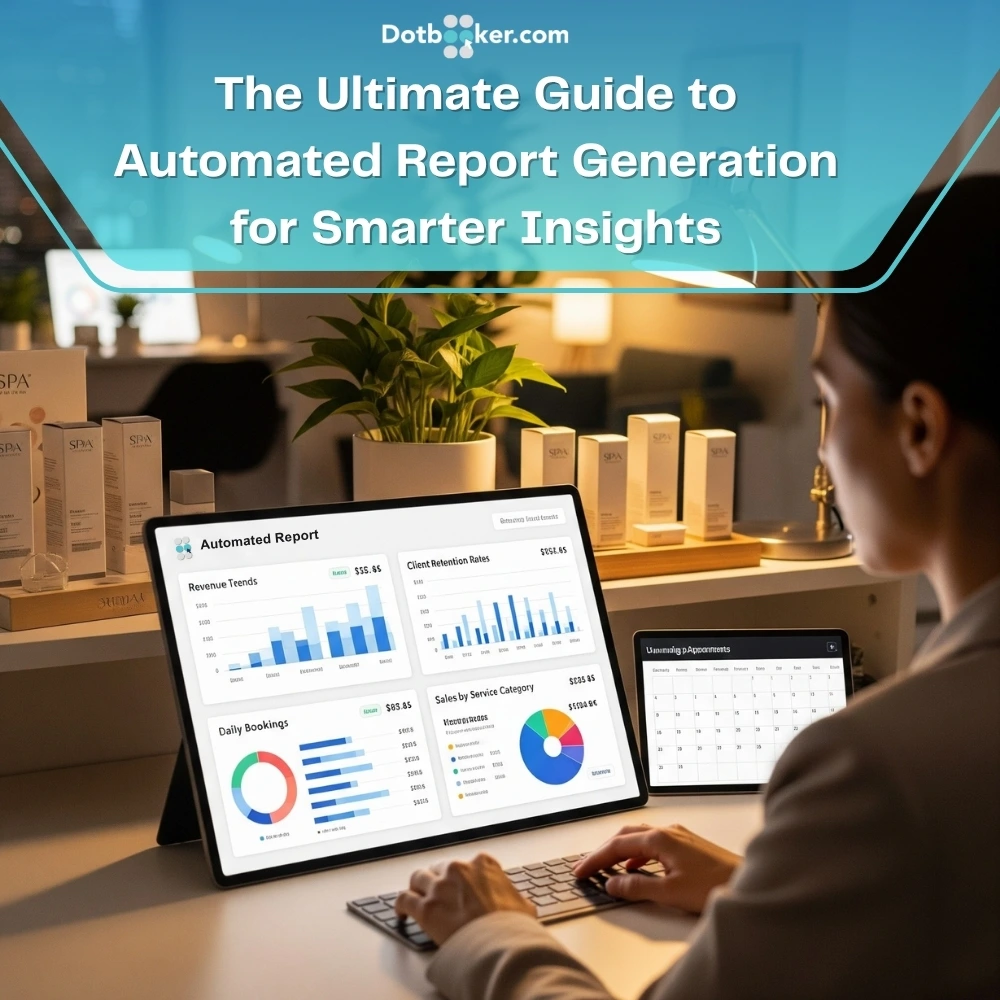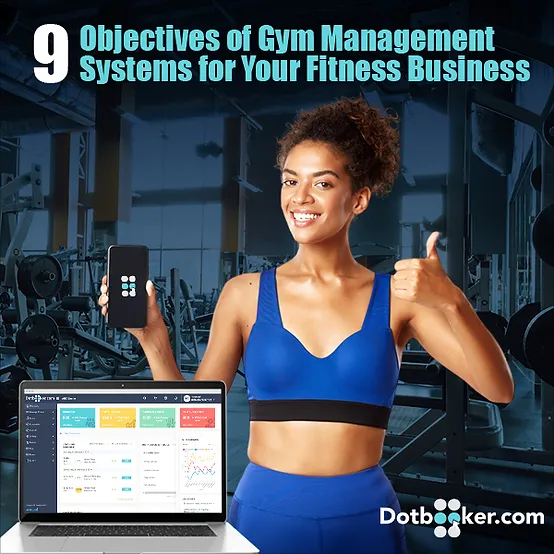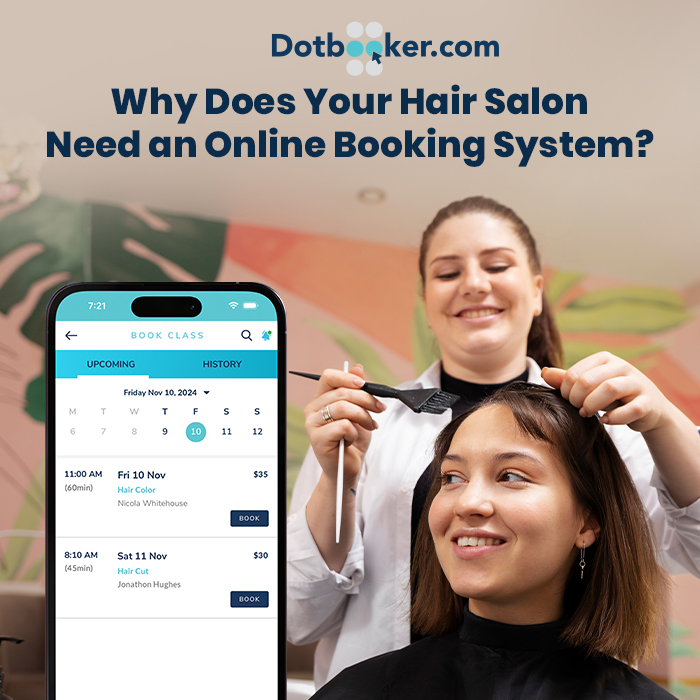
- By Dotbooker
- Aug 18, 2025
- 646
The Ultimate Guide to Automated Report Generation for Smarter Insights
Manual reporting slows you down. Endless spreadsheets, copy-pasting data, fixing formulas—it’s time-consuming, error-prone, and outdated.
An automated reporting system does the work for you. It pulls data from your sources, organizes it, visualizes it, and sends it where it needs to go—without you lifting a finger.
Why Businesses Are Breaking Up with Manual Reporting
Something is exhausting about redoing the same report every week, syncing data across apps, adjusting graphs, and hoping you didn’t miss a decimal. Multiply that by 10 departments—and you’ve got an internal traffic jam that slows down decision-making and frustrates teams.
It’s not about working harder. It’s about working with tools that work for you. And in this case, the right automated reporting tool doesn’t just lighten your workload—it accelerates everything.

So, What Exactly Is an Automated Reporting System?
An automated reporting system is a software solution that connects to your business’s data sources, transforms that raw data into meaningful insights, and delivers reports without manual intervention.
Instead of pulling data and building each report manually, these systems can:
- Generate real-time dashboards
- Schedule recurring reports (daily, weekly, monthly)
- Send personalized insights to multiple stakeholders.
- Auto-detect anomalies or missed targets
- Enable custom filtering, drill-downs, and KPIs
The real magic? These tools don’t just present data. They structure it in a way that tells a story—one that your team can instantly act on.
6 Reasons Smart Businesses Are Switching
Let’s explore the top reasons why smart businesses are migrating to automated report generation functionality.
1. Real-Time Decision Making
Business waits for no one—your data shouldn’t either.
In today’s fast-moving service landscape, decisions made late are opportunities lost. Automated dashboards provide live updates the moment your data changes, giving you the agility to act right away.
- A fitness center manager sees an unexpected dip in evening class attendance and instantly launches a flash promo.
- A salon owner tracks rising demand for a trending service and reallocates resources within the same hour.
No more playing catch-up on Friday with data from Monday. With real-time insights, you’re already ahead.
2. Accurate, Clean Data
Garbage in, garbage out. Clean data builds trust—and smart decisions.
Manual reports are prone to human error: broken formulas, outdated exports, or someone forgetting to update last week’s spreadsheet. These mistakes might seem small, but they stack up—resulting in misinformed strategies and avoidable losses.
Automated reporting eliminates the guesswork:
- Data flows directly from trusted, pre-validated sources.
- Logic stays consistent across all reports—no version confusion or last-minute patches.
The result? Every stakeholder gets the same clean, accurate, and up-to-date view. One version of the truth. Every time.
3. Role-Based Customization
More data doesn’t mean better decisions—it just means more noise.
Automated reporting lets you serve the right data to the right person in the right format.
- Your front-desk team sees appointment schedules and client no-show rates.
- The marketing team views ad ROI, lead conversions, and cost-per-booking.
- Management gets a consolidated view of revenue, occupancy, and performance KPIs.
No one’s overwhelmed. Everyone’s informed.
This targeted visibility boosts speed, accountability, and clarity at every level of your business.
4. Better Client Experiences
Clients don’t care about your reports—but they feel the difference when you act on them.
When your team has real-time visibility into client behaviors, they can personalize offerings, fix issues before they escalate, and create truly engaging experiences.
- A yoga studio sees a spike in early morning attendance, prompting them to open two more 6 AM slots next week.
- A massage center tracks which clients haven’t returned in 30 days—automated loyalty emails go out that day.
- A nutritionist notices a drop-off after the third session, so they tailor follow-up calls to boost retention.
With automation, you're not reacting—you’re anticipating. And that’s the secret to next-level client service.
5. Scales With Your Business
Growth shouldn’t break your reporting system—it should strengthen it.
As your business expands across locations, services, or teams, your reporting needs evolve. Manual systems can’t keep up. Automated tools are built to grow with you.
- Add new service categories without rebuilding your reports.
- Generate team-specific dashboards across multiple branches.
- Auto-send board-ready summaries every month without formatting hell
Whether you're running a single studio or scaling across regions, your reporting adapts to your momentum—not the other way around.
6. Transparency and Accountability
When everyone sees the same numbers, alignment becomes second nature.
Automated reporting removes silos. It ensures that data isn’t locked in someone’s desktop Excel file or lost in a weekly email thread.
- Marketing adjusts strategy based on sales data in real-time.
- HR and Operations align on workforce productivity instantly.
- Department heads track their team’s performance without chasing updates.
Shared dashboards foster trust, eliminate confusion, and build a culture of ownership—where everyone knows what’s working and what needs fixing.
Choosing the Right Reporting Tool
Not every “automated” tool delivers real value.
Many platforms claim automation but still require manual exports, confusing workflows, or weeks of onboarding. The right tool should fit seamlessly into your operations, simplify decision-making, and scale with your business.
Here’s what matters when evaluating an automated reporting system:
Data Source Integration
Your reports are only as smart as the data they pull from.
If you’re manually uploading CSVs or toggling between systems to fill gaps, it’s not true automation. Look for tools that connect effortlessly with your existing platforms—POS, CRM, HRMS, inventory, finance, booking systems, and more.
- Use native integrations to avoid syncing delays.
- Prefer platforms with open APIs for future flexibility.
Example: Your POS and accounting tools talk to your dashboard in real time. By 9 AM, your sales, revenue, and booking trends are already waiting—no need to run a report.
Easy to Use (Even for Non-Tech Teams)
If your team dreads opening the dashboard, the tool has already failed.
A clean, intuitive interface ensures adoption beyond the C-suite. Everyone—from front-desk staff to department heads—should feel confident pulling their insights.
- Drag-and-drop report builders
- Pre-set templates tailored to your industry
- Minimal training required
Ask yourself: Can your front desk staff build a basic check-in summary in under 2 minutes? If not, it’s too complicated.
Smart Visuals That Speak Volumes
Data alone won’t drive action. Stories will.
Choose a system that turns numbers into narratives. You should be able to see what’s happening—and why it matters—at a glance.
- Dynamic charts, heatmaps, timelines, and multi-layered graphs
- Real-time filtering by date range, location, service, or campaign
- Interactive elements to drill down into granular insights
Spot seasonal dips in bookings, identify your top-selling packages, or uncover slow hours—without touching a spreadsheet.
Built-In Security & Compliance
Data is power—but only if it’s protected.
Your reports may include sensitive client information, employee metrics, or financials. Ensure the platform offers enterprise-grade security, especially if you operate in healthcare, wellness, or finance.
Look for:
- End-to-end encryption
- Two-factor authentication
- Role-based access controls
- Audit trails for data changes
- Compliance with local and international laws (e.g., GDPR, HIPAA)
Example: Your studio manager can view attendance but not payroll. Your finance lead can access revenue, but not customer contact details.
Real-Time Alerts & Triggers
The best systems don’t just show you what happened—they tell you what needs your attention.
Alerts let you respond before small issues become big problems.
Set up custom triggers like:
- “Alert me if class occupancy drops below 60% for 3 days straight.”
- “Send a Slack notification when daily revenue crosses $5,000”
- “Notify HR if employee attendance drops below 80% this week.”
Stay proactive, not reactive—your data should talk back.
Support That Scales With You
Even the smartest tool needs a human touch.
Look for vendors who offer more than just software. You want onboarding, live support, training, and regular updates—not just a PDF manual and a chatbot.
Ask for:
- Onboarding assistance for different team roles
- Clear roadmaps for new features
- Flexible pricing as your usage grows
- Customization options as your needs evolve.
You’re not just buying a tool—you’re investing in a long-term reporting partner.

A Better Way to Run Your Business
If you’re looking for a reporting experience that matches the pace and professionalism of your service business, it's time to move beyond spreadsheets.
Dotbooker, a smart business management platform designed for wellness and fitness-based industries, offers robust automated reporting tools that help you stay ahead of the curve. From client trends to financial performance, inventory insights to attendance tracking—Dotbooker automates the essentials so you can focus on growth, service, and client satisfaction.
Automated reporting isn’t a luxury. It’s the operational backbone of modern service businesses. And the sooner you adopt it, the sharper your edge will be.
Popular Blogs

- Oct 20, 2022
- 4744

- Sep 08, 2024
- 4069

- Nov 11, 2022
- 3509

- Sep 16, 2024
- 2886
Transform your business now!

Get an expert consultation for your business's streamlined operations.